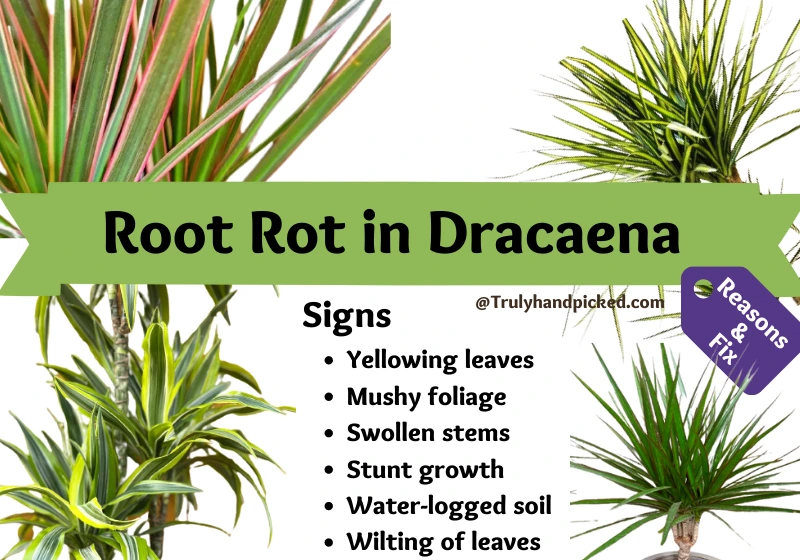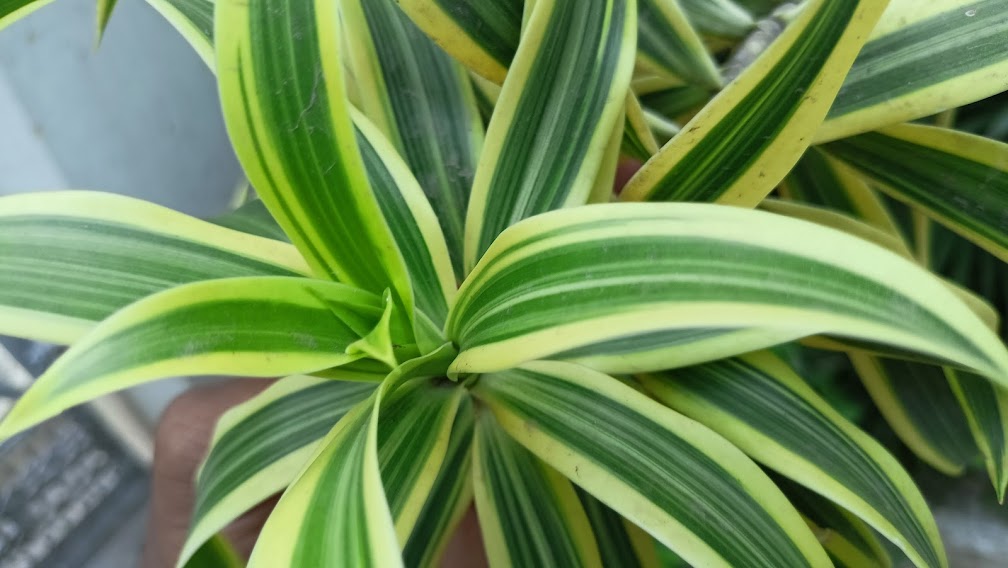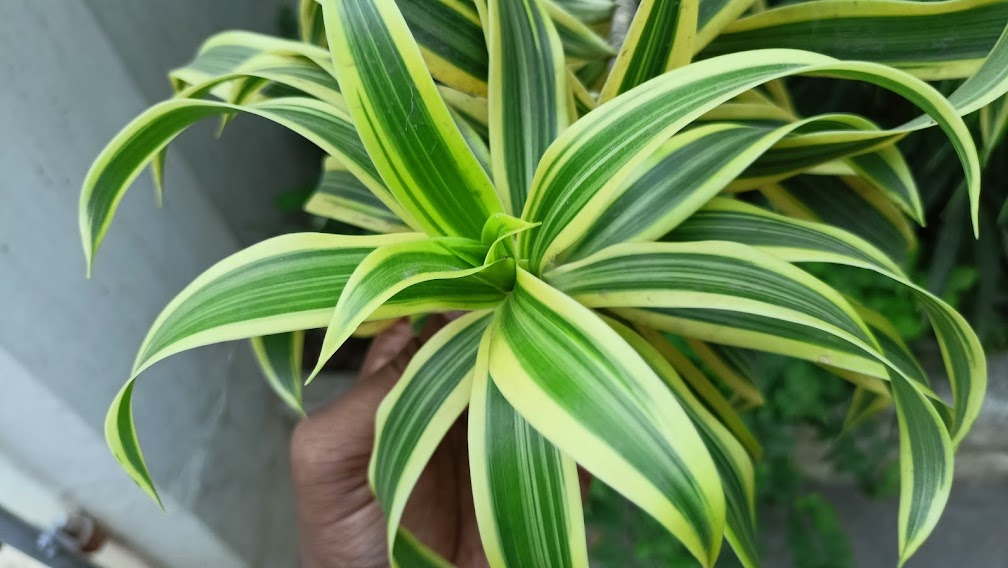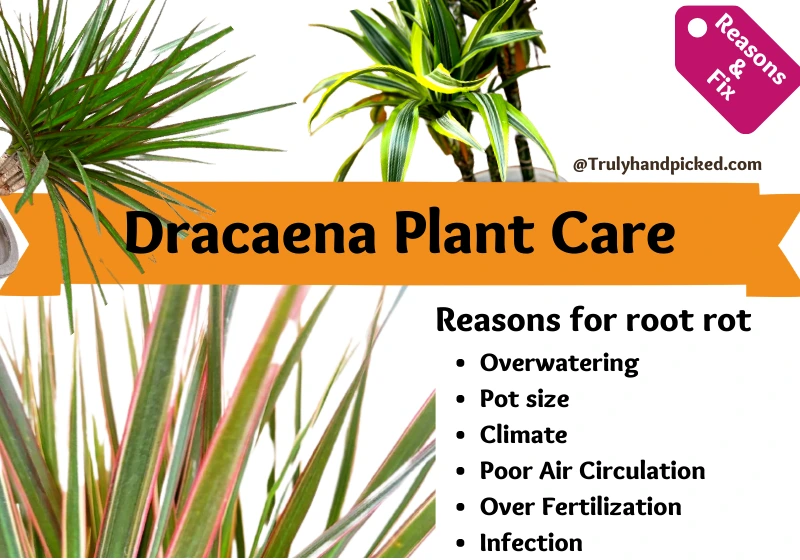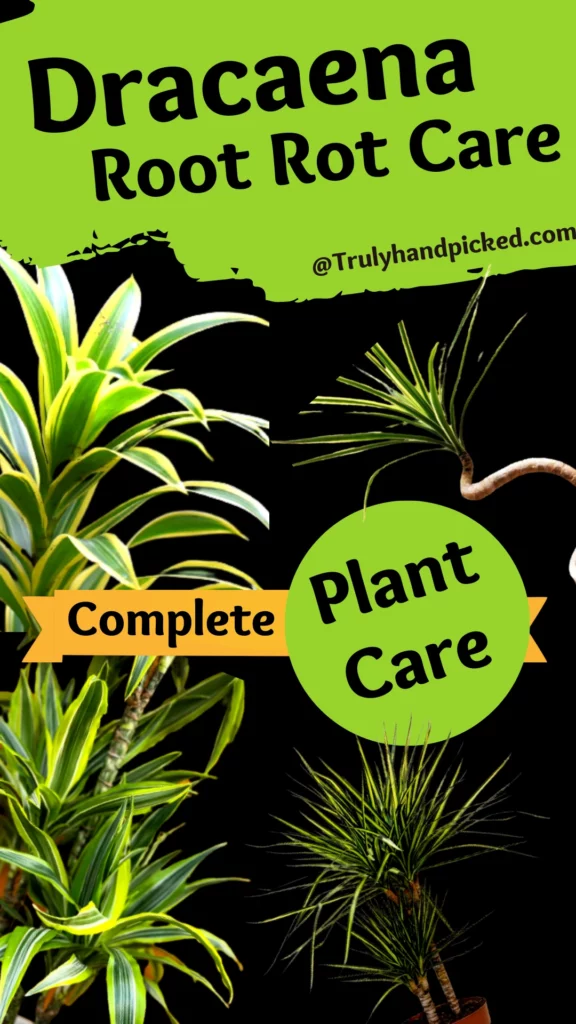Dracaena is a succulent shrub that provides an unavoidable charm to your place when grown as a houseplant. This plant belongs to the asparagus family and holds an incredibly dense root system.
Dracaena is one of the cool indoor plants which forgive for your maintenance mistakes. It can tolerate low light but slow growth, while bright indirect light with ambient temperature can last a bunch of years together in a pot.
Dracaena are easy to care for but loves a warm climate and hate frosty outdoor and cold drafts.
However, some constant mishandling in their caring routine could end up in an unpleasant experience like root rot. Root rot in a dracaena plant is very common and you can revive it effectively with some elementary curing tips.
Only a few segments you should keep in mind during the period of handling root rot. Here we come up with the detailing about how to recognize and fix root rot in a dracaena plant efficiently, along with some other basic knowledge about this striking houseplant-
How to Recognize Root Rot in Dracaena Plant
When your dracaena plant must have root rot, it will show some apparent signs, such as-
- Yellowing leaves
- Mushy foliage
- Swollen stems
- Stunt growth
- Water-logged soil
- Wilting of leaves
- Mils to severe discoloration on leaves
- Brown or black roots
- Roots turn spongy
- The rotten odor from the roots
- Apparent fungal infestation on the soil
Causes of Root Rot in a Dracaena Plant
Fixing the process of root rot in a dracaena starts with finding its real cause. Some most typical reasons for having root rot in a growing dracaena are, as follows-
Overwatering:
Watering your dracaena plant excessively; considers the main reason for root rot of this succulent. Due to being drought-tolerant, this plant doesn’t require much water to thrive. Consequently, when you water it unnecessarily, it will get soggy soil with a low-oxygen level that soon ends up with root rot.
Poor Drainage:
Sometimes even moderate watering could initiate the same root rot issue in your plant unexpectedly. If you use soil with less draining quality or a planter with a poor drainage system, it will make the soil water-logged, no matter how less or how infrequently you water your dracaena plant.
Improper Pot Size:
Improper pot size is a bad choice as overwatering for a dracaena plant. If you pick a wider pot than the root size, it will cause root-bound. On the other hand, when you use a smaller pot, it will give the roots of your growing dracaena a clogged atmosphere. So, both ideas are terrible for having the healthiest form of your dracaena plant.
Unsuitable Climate:
A growing dracaena plant always seeks a consistently warm temperature with high humidity. A warm climate can help a growing dracaena to evaporate adequately and increase the water absorption rates as well. This will also decrease the probability of root rot in your dracaena plant effectively.
Poor Air Circulation:
Due to having a dense root system, dracaena roots always want good oxygen levels and air circulation. So, make sure that your plant doesn’t have a poor ventilation system at all to keep the root rot possibility of your dracaena at bay. Choosing soggy or clay-based soil often causes stagnant air and consequently ends up with root rot.
Over Fertilization:
The fertilization of a plant depends on its feeding quality. You should remember that the dracaena plant is not a high feeder. So, you must stop overfertilizing it mindfully. Overfertilization diminishes the essential nutrient values of the potting soil. It also impacts the capability of your plant effectively.
Watering During Dormancy:
Watering during an improper season is even worse than overwatering or underwatering. If you water your dracaena plant during winter or high-humid seasons like a monsoon, it won’t help your plant thrive well. During this period, the plant suffers from slow-growing growth. Thus, any kind of watering can lead to root rot in your plant inevitably.
Fungal or Bacterial Infestation:
One more common cause of root rot in a dracaena plant is increasing fungal or bacterial infestation in the soil. Overwatering, using contaminated soil, unsterilized garden tools, during plantation, etc. can cause this kind of fatal fungal or bacterial infestation in the soil of your growing plant.
How to Fix Root Rot In Dracaena Plant:
To fix root rot in your dracaena plant, you must eliminate the tiniest cause of root rot from its caring regimen. Besides, follow some smart hacks while caring for dracaena regularly. Here are some valuable tips in this regard-
Water Only When Needed:
- Use only distilled water to hydrate your dracaena plant
- Water it once a week
- Let the top 2 inches of the soil dry before watering
- And make sure the excess water is draining well at the bottom
Pick The Right Planter Size:
- Be certain that the planter is only 1-2 sizes bigger than the root ball of your plant
- Check for the proper and working drainage holes of the planter
- Choose a clay or terracotta pot to give the roots of your plant the best condition
- Make sure the top part is widely open
Be Attentive of Potting Mix:
- Choose a potting mix that has well-drained quality
- Combine loam, pumice, peat, and normal garden soil
- Keep the ratio 1:1:1:1 for the best result
- Make your soil rich with organic matter to balance the pH well
Allow More Air Flow:
- Increase the air circulation of the soil of your dracaena plant
- Always use loose soil with enough ventilation
- Never let the pot become clogged for the root system
- Use a fan around the planter once a while, to keep the oxygen level of the soil proper
Avoid Normal Routine During Dormancy:
- During dormancy, your plant suffers from a slower growth rate
- Try to skip the fertilization during this time
- Stop watering following the normal schedule through this season
- And try to keep your plat away from open cold drafts
Maintain Proper Growing Climate:
- Keep your plant in a room where the temperature is moderately warm
- Maintain a growing temperature between 65° to 75° F
- Keep the humidity level 60-70% high to get the best thrive
- And place your plant under the sun with partial shade to cater to the best light condition
Eliminate The Possibility of Contamination:
- Use a garden tool that is fully sterilized for the planation
- Take fresh potting soil and completely clean plater for the replantation
- Apply fungicide or anti-bacterial spray on the soil during the plantation
- Check your plant once a week to stay updated about any kind of fungal infestation
Trim Off Infected Part:
- If you find any discolored leaf, stem, or infected part cut it off immediately
- Use a fully disinfected pruner every time you prune your plant
- If you suspect any misconception at the root part, trim it off too
- After that repot your plant in a new planter accordingly
Treat Pests Issues:
- Look for any kind of pest or bug infestation on your plant closely
- Scale, aphid, and mealybugs are some common nuisances you should mind here
- Give your plant a good rinse with soapy water
- Wash your dracaena plant with neem oil spray once a week to get rid of bugs permanently
Propagate and Repot in Time:
- Try to propagate the newly formed stems and leaves once a year
- It will give the stems and foliage of your plant enough space to thrive
- Repot you plant in every 2-3 years
- And change the spot of your planter consistently after every few weeks
Apart from this, check the growth of your plant closely and feed them once in a while. This will keep the growth rate consistent of your dracaena plant along with maintaining the roots healthy.
Difference Between Yucca and Dracaena Plant
Dracaena and yucca both are beautiful houseplants and have immense popularity among indoor gardeners. These two common ornamental plants have some apparent differences that are easy to detect. Such as-
Firstly, dracaena is a houseplant that mostly grows indoors, while yucca is usually famous for being an outdoor plant.
Secondly, dracaena plants are very particular about the growing temperature and can’t stand cool temperatures for long. On the other hand, you can keep a yucca plant under cold temperature and handles cold damage expertly.
Thirdly, Yucca cultivates pointed sword-like leaves that grow between 1-3 feet. Dracaena grow similar kinds of pointed leaves but the incline to more rigid than the leaves of the yucca plant.
Next, the Foliage of the yucca plant thrives in a subtle leafy-green shade. While leaves of our dracaena plant are darker in the green shade, and always grow with more trunks than yucca plants. This gives your dracaena plant a tiny tree-like shape, unlike the yucca plant.
Finally, in the yucca plant leaves die and stick on the stem until new foliage grows on the same spot and pushes them down. Unlikely, leaves of the dracaena plant fall off the stem, once they die, leaving an unusual Dimond shape scar on the stems.
